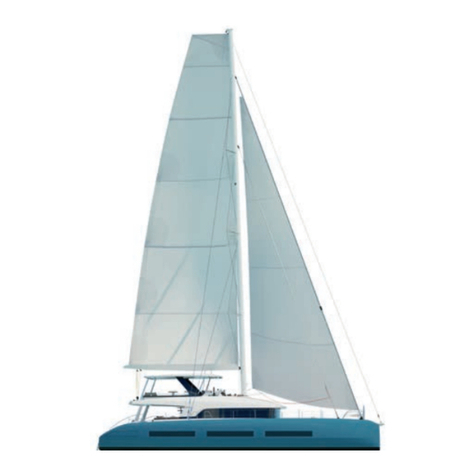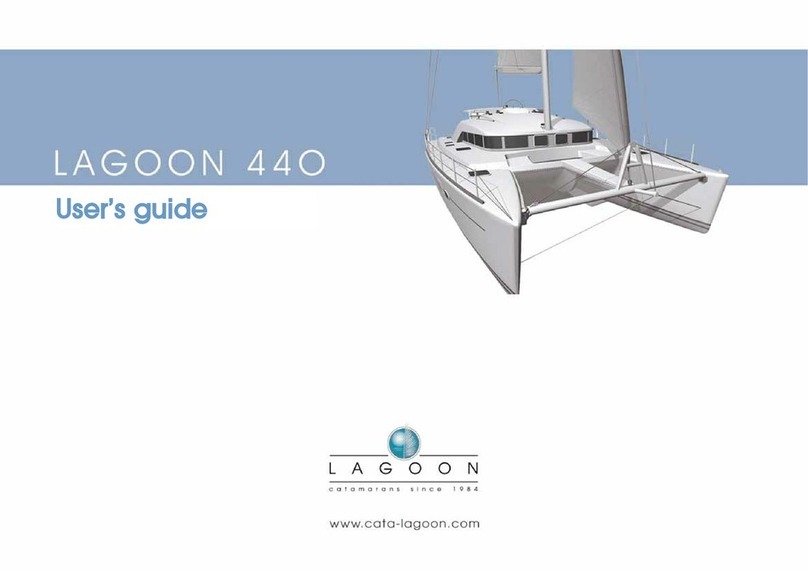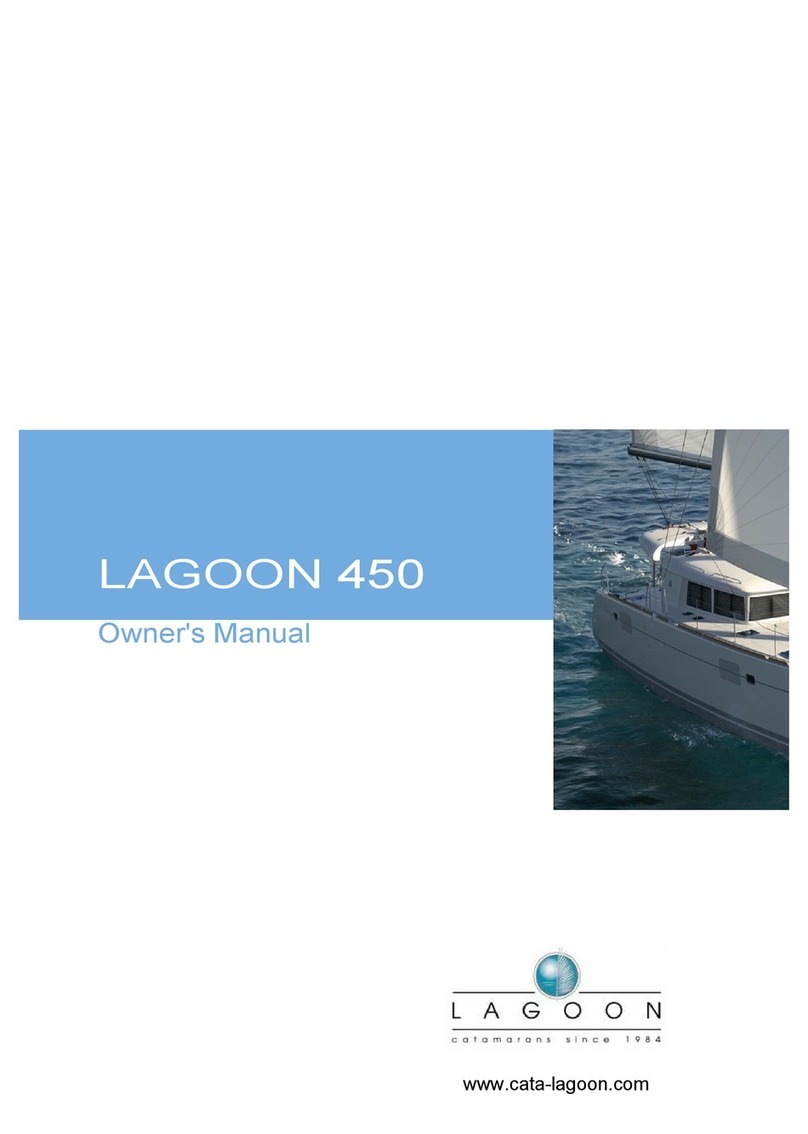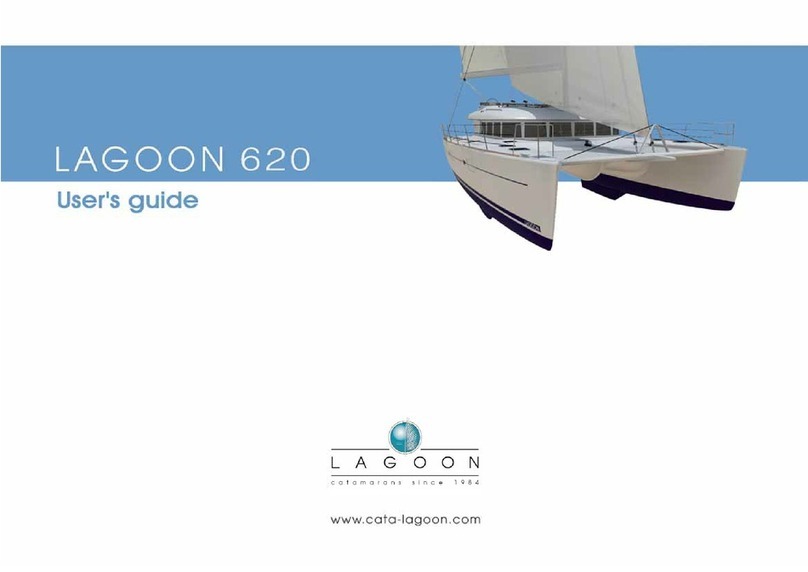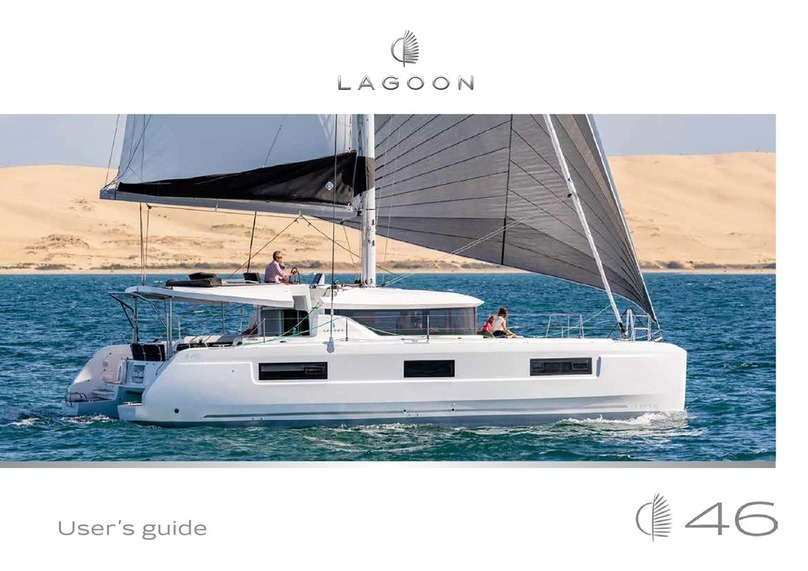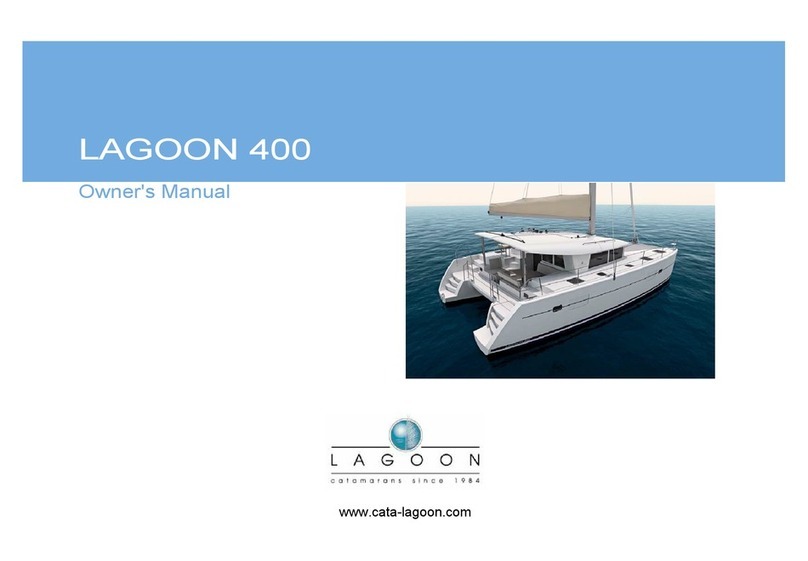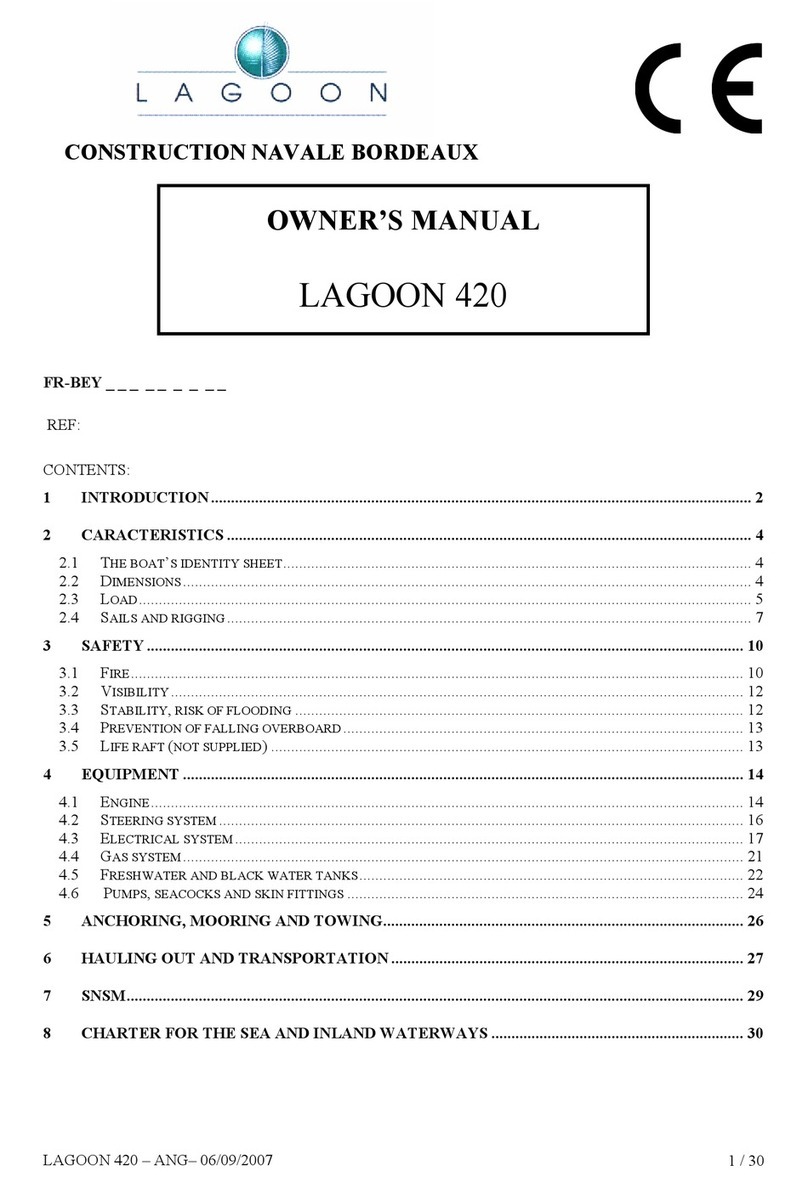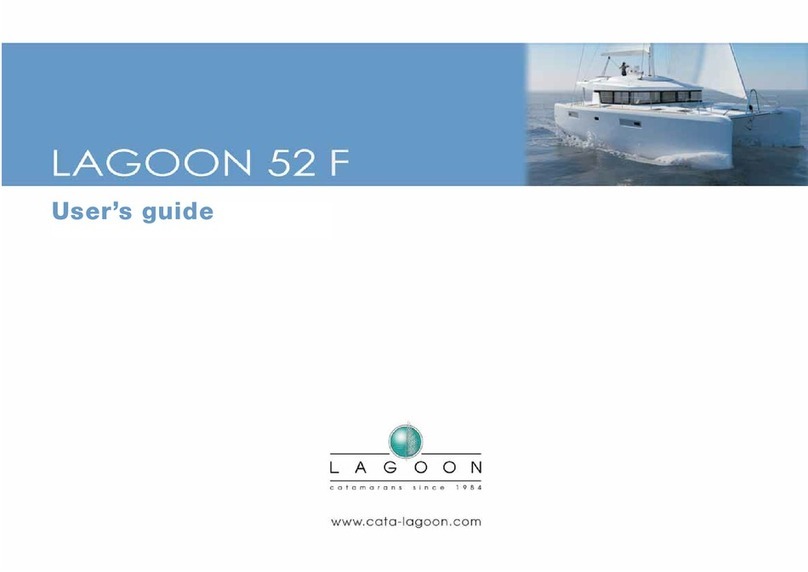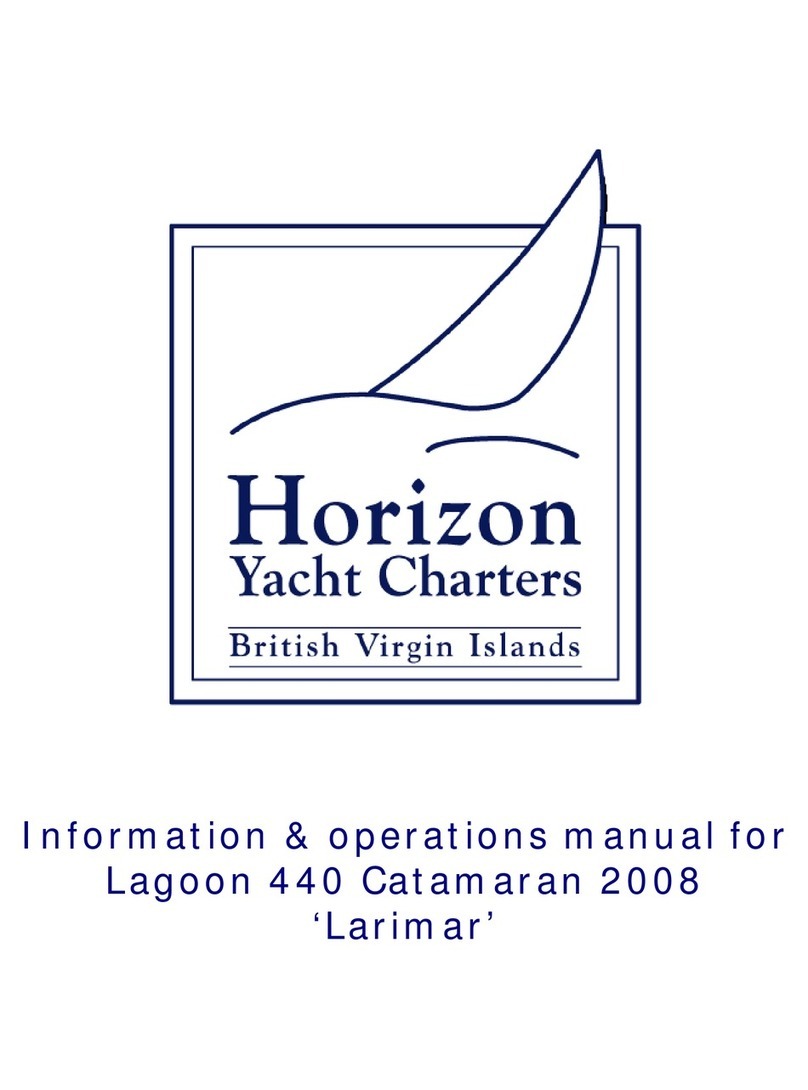
Any boat, however solid she may be, may be severely damaged if
badly used. This is not compatible with a secure navigation. Always
adapt the speedand direction of your boat to the conditions of the sea.
The'COLREG', an internationalregulation in order toprevent collision
atsea,published by theInternationalMaritimeOrganization,specifies
the steering and course regulations, the navigation lights etc.
throughout the world Make sure you know these regulations and you
have on board a manual that explains them.
In numerous countries,a licence, an authorization or a training course
is requested.
Make sure you have this legal authorization before you use your boat.
Always use an experienced technician for the maintenance of your
boat, the fitting of accessories and the carrying out of small
modifications. The written authorization of the builder or his legal
representative is compulsory for modifications that alter the
specifications of the boat, in particular the vertical layout of the
grounds (putting up of a radar, modification of the mast, change of the
engine etc.).
The users of the boat are informed of the following:
- The entire crew must be trained properly.
- The boat shall not be loaded more with than the maximum load re-
commended by the builder, in particular the total weight of the food
supplies, of the different equipment that are not supplied by the buil-
der and of the persons on board. The weight of the boat shall be pro-
perly distributed.
- The water in the bilge shall be kept at its minimum.
- The stability is reduced when you add weight in the upper parts.
- In case of heavy weather, the hatches, lockers and doors shall be
closed in order to minimize the risk of water coming in.
- The stability may be reduced when you tow a boat or when you lift
heavy weights with the davits or the boom.
- Breakers are serious dangers to stability.
- In the boat there shall be all the proper safety equipment (harness,
flares, liferaft etc.) depending on the type of boat, the country, the
weather
- The crew must be familiar with the use of all the safety equipment
and the emergency safety procedures (MOB, towing etc.).
-Anyoneonthedeckshall wear alifejacket or abuoyancyaid.Please
note that in some countries it is compulsory to wearan homologated
buoyancy aid permanently.
For the essential or optional equipment (engine, electronics
etc.) refer to their respective manual delivered with your boat.
Keep this manual in a safe place and hand it over to the new
owner if you sell your boat.













